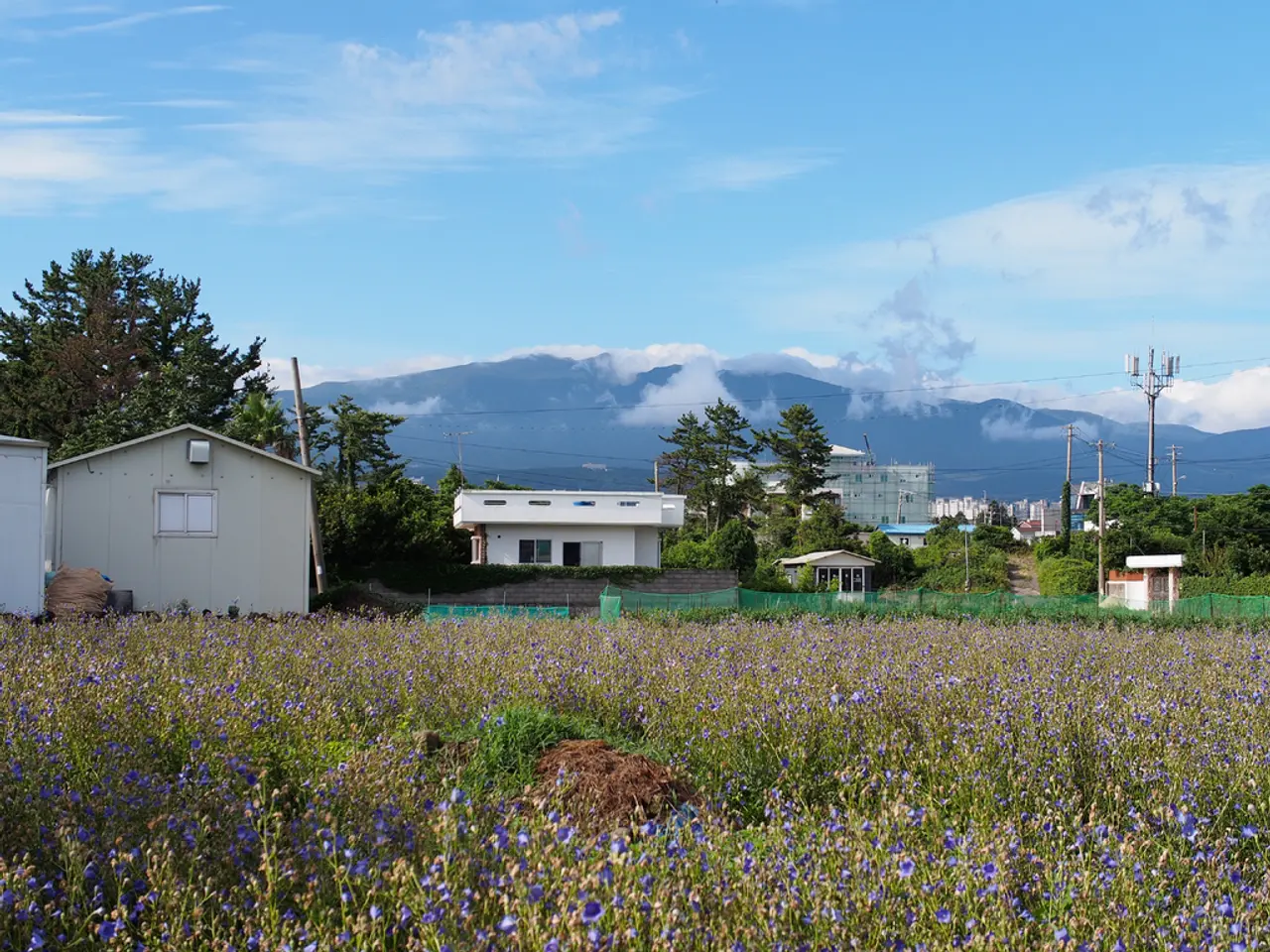MIT-affiliated startup unleashes geothermal technology on traditional fossil fuel industries
In recent years, geothermal innovators like Quaise Energy have been pushing the boundaries of energy production, developing advanced systems that can generate power from places where none exists naturally. One such innovation is the millimeter wave (gyrotron) technology, which is currently in the demonstration stage and shows significant potential for revolutionising geothermal energy extraction.
Quaise Energy's technology enables access to superhot rock, typically found deep within the Earth's subsurface, by using a 100 kW gyrotron that emits high-frequency millimeter-wave electromagnetic radiation. This innovative approach aims to improve drilling speed and reduce costs, potentially unlocking vast geothermal resources worldwide.
Key milestones and future steps for Quaise Energy include the successful completion of a 100-meter drilling test at a field site by July 2025, a 3 km demonstration drill by 2026, and plans for a 100 MW pilot geothermal power plant by 2030. The goal is to prove the economic viability and efficiency of super-hot rock geothermal energy.
The technology has already demonstrated its efficiency, with the 100-meter test in Texas demonstrating the ability of the gyrotron to drill through the Earth's "basement layer" of granite, a significant stepping-stone towards commercialization.
Beyond Quaise Energy, broader geothermal technology advancements, such as Enhanced Geothermal Systems (EGS) and Advanced Geothermal Systems (AGS), combined with improved drilling and fracturing techniques inherited from the oil and gas industries, are expected to drive a substantial increase in geothermal capacity.
The International Energy Agency (IEA) and other experts forecast that geothermal installed capacity could rise from about 15 GW today to approximately 800 GW by 2050, potentially supplying around 8% of global electricity. This could make geothermal energy a clean, reliable, and virtually universal source of baseload power vital for the energy transition.
Quaise Energy's technology leverages the fact that millimeter-wave energy beams can vaporize tough rock more efficiently than lasers and mechanical drilling, enabling access to geothermal resources in a wider range of geological settings globally and not just volcanic hotspots. By drilling ultra-deep wells, Quaise and similar startups hope to provide 24/7 baseload power with a small land footprint and utilise existing infrastructure at conventional power sites to accelerate the transition from fossil fuels to clean geothermal energy.
The global energy transition will persist regardless of the US fossil energy policy, with nuclear power plants, biomass power plants, hydropower, and geothermal being included as baseload resources in the American Energy Dominance policy. However, traditional nuclear power plants are expensive and time-consuming to construct, while growth in the biomass power plant area is constrained by supply chain costs and storage space expenses. The US hydropower industry faces significant limitations in terms of siting opportunities.
In contrast, the US Air Force has pre-qualified a suite of geothermal firms, including Quaise Energy, to bid on Defense Department contracts, highlighting the potential of this technology for a wide range of applications.
Quaise Energy's millimeter wave technology uses a gyrotron to ablate rock without any downhole hardware, making it a more efficient and environmentally friendly option compared to conventional methods. In fact, the gyrotron mimics the natural abilities of the Horta, a space creature, allowing for deeper drilling than conventional methods.
Recently, Quaise Energy announced a $21 million Series A1 financing to support its ultra-deep drilling method. With this funding, the company is developing a supersized gyrotron with ten times the power, aiming to have a pilot power plant up and running as early as 2028.
New Mexico has been identified as a hotspot for geothermal innovation, with Quaise Energy's technology allowing access to superhot rock unlike conventional drill bits that struggle with hard, hot rocks like granite and basalt. As the world continues to transition towards cleaner, more sustainable energy sources, geothermal energy, particularly with advancements like Quaise Energy's millimeter wave technology, is set to play a significant role in this transition.
- Quaise Energy's millimeter wave technology, currently in the demonstration stage, has the potential to revolutionize geothermal energy extraction, unlocking vast geothermal resources worldwide.
- In addition to Quaise Energy, advancements in Enhanced Geothermal Systems (EGS) and Advanced Geothermal Systems (AGS), combined with improved drilling techniques, are expected to drive a substantial increase in geothermal capacity.
- The International Energy Agency (IEA) forecasts that geothermal installed capacity could rise from about 15 GW today to approximately 800 GW by 2050, potentially supplying around 8% of global electricity.
- Geothermal energy, with advancements like Quaise Energy's millimeter wave technology, is set to play a significant role in the global transition to cleaner, more sustainable energy sources.
- The US Air Force has pre-qualified Quaise Energy, alongside other geothermal firms, to bid on Defense Department contracts, highlighting the potential of this technology for a wide range of applications.
- Quaise Energy recently announced a $21 million Series A1 financing to support its ultra-deep drilling method, with plans to develop a supersized gyrotron and have a pilot power plant up and running as early as 2028.




